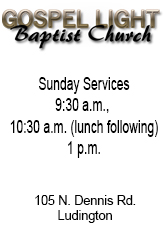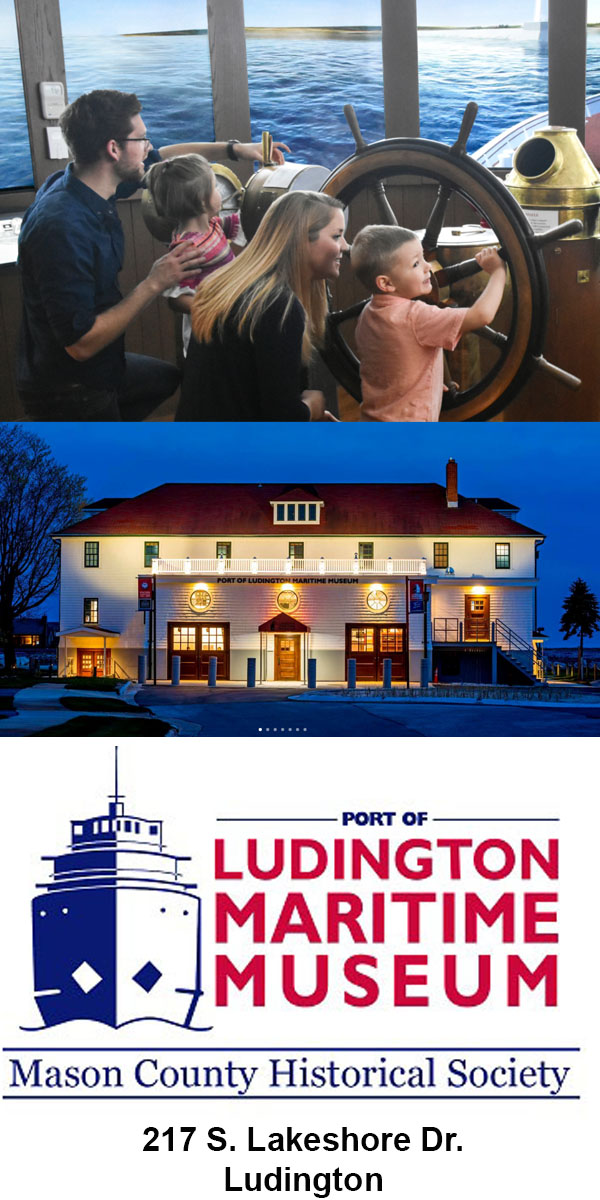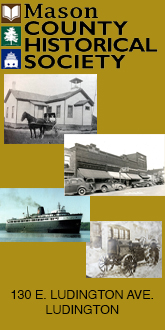
S.S. Wisconsin
Great Lakes History Log is presented by Filer Credit Union with offices in Manistee, Ludington, East Lake, and Bear Lake and the Mason County Historical Society, which operates the Port of Ludington Maritime Museum, Historic White Pine Village and the Rose Hawley Archives in downtown Ludington.
Part 3: S.S. Wisconsin
By Rob Alway, Editor-in-Chief
The last four months of 1929 were a deadly time for Lake Michigan shipping. At least four shipwrecks claimed the lives of over 100 people. This series will discuss each of those wrecks and will also make some comparisons to why some resulted in total losses while others had much fewer lives lost.
The ships lost included the S.S. Andaste (Sept. 9), the S.S. Milwaukee (Oct. 22), the S.S. Wisconsin (Oct. 29), and the S.S. Senator (Oct. 31). Of those five wrecks, two of them resulted in total lives lost. Neither of those two ships, the Andaste and the Milwaukee, were equipped with wireless radio.
Other parts of this series:
Part 1: 25 lost on the S.S. Andaste
Part 2: Sinking of Milwaukee was worst car ferry disaster

Capt. Albert Goodrich
In 1875, a year after its completion to Ludington, the Flint & Pere Marquette Railway began cross-lake break-bulk service across Lake Michigan from Ludington to Wisconsin. Break-bulk service consisted of removing freight from railcars at the docks, loading them on ships, then transporting it across the lake.
By 1876, the railroad contracted with Goodrich Transportation Company of Chicago to transport its freight. This was a very lucrative contract for Goodrich, which became the largest passenger/freight service on Lake Michigan.
Goodrich Transportation Co. (later Goodrich Transit Co.) was founded by Capt. Albert Goodrich in 1855, when he was 30-years-old, when he took possession of his first side-wheel steamship, the 165-foot-long Huron, built in 1852.
In 1881, Goodrich hired famed naval architect Frank Kirby to design three new ships to operate the Ludington to Milwaukee route.
The three new ships were built by the Detroit Dry Dock Company at Wyandotte, Mich.
First of the three to be completed was a side-wheeler, the S.S. City of Milwaukee. The boat was launched on Feb. 11, 1881 at a cost of $179,000. This should not be confused with the car ferry City of Milwaukee built by the Grand Trunk Western Railroad following the loss of the S.S. Milwaukee that is one of the topics of this series.
The other two steamers were propellers. The S.S. Michigan was launched on Aug. 20, 1881 with the S.S. Wisconsin following on Oct. 11, 1881. Both Michigan and Wisconsin were taken to Milwaukee for fitting out and completion. Both new steamers were finished and in regular service by the end of the year.

S.S. Michigan
The Michigan and Wisconsin were rated at 1,183 tons and were 215 feet in length. Their beams were 34 feet wide and their depth were 14 feet. Each cost $159,212. They were especially designed for cross-lake winter service and had heavy ice-breaking qualities incorporated in their construction. Each had the rounded forefoot and full entrance found on the car ferries. This feature permitted the ship to rise up on the ice, crushing it with its sheer weight. The vessels were also equipped with double iron bottoms and their main decks were fashioned of the same material.
The three new ships only ran about two years for the Goodrich line. In 1882 the first two ships owned by the Flint & Pere Marquette Railroad arrived in Ludington, F&PM No. 1 and F&PM No. 2. With the purchase of these two new steamers it was apparent that the railway company intended to go into the lake steamboat business for itself.

F&PM No. 1
Slowly business was taken away from the Goodrich steamers. On April 1, 1883, the F&PM cancelled its contract with Goodrich and ending Goodrich’s Ludington-Milwaukee route.
This was a serious blow to the Goodrich Transportation Co. A huge portion of its capital and funds borrowed from the banks had been invested in the new steamers and the development of the new service. The termination, after really less than two years’ earnings from the new service, meant insufficient return on the investment. To avoid a financial crisis within his company, Capt. Goodrich decided to sell his three new steamers to satisfy his creditors and obligations.
On May 1, 1883, the three ships were sold to the Detroit, Grand Haven & Milwaukee Railway Co. The railroad paid $180,000 for the City of Milwaukee and $160,000 each for the Michigan and Wisconsin, the forerunner of the Grand Trunk Car Ferry Line operated by the Grand Trunk Western Railway.
The Michigan was the first of the twins to be lost, only a year after being sold to the DGH&M.

Wisconsin running under the DGH&M flag.
In the early months of 1885, a harsh winter had embattled shipping in Lake Michigan. It was typical at that time for shipping on the Great Lakes to halt during the winter months. But, an early thaw in February prompted it to resume. As soon as ships left port with cargo, however, a strong winter storm engulfed the region, dropping three feet of snow in two days. This caused many ships to become trapped in ice, including the Michigan and the Wisconsin.
Knowing the ships and their cargo could be doomed if left to the ice pack, the Milwaukee Railway Company decided to use the Michigan and her double hull to break through the ice and free the trapped vessels.
On the morning of Feb. 9, 1885, the Michigan and 29 crewmen set up to see if they could free the ships. A gale blew the ship off course and into an ever-growing ice pack. By the morning of the Feb. 11, it was trapped in ice, drifting south. By Feb. 17, conditions remained unchanged, and the crew was quickly exhausting resources.
The captain ordered that the crew ration supplies, and also enlisted a 17-man team to venture across the frozen lake, to land, as the condition of the ship had worsened. The group, using ice picks, axes, and ropes, covered 12 miles and reached shore in Allegan County. On Feb. 21, a resupply ship arrived to restock the trapped Michigan.

S.S. Wisconsin
Four weeks passed. While conditions improved, and ice began to break up, the Michigan was still trapped. On March 19, the pressure on the hull was causing the boat to moan, as the double iron hull buckled, and continued throughout the night. The tugboat Arctic arrived the following day as a last effort to free the Michigan. The Arctic became trapped as well. Late that night, the hull of the Michigan filled with water, and the captain ordered to abandon ship. All the crew was able to leave the doomed ship and watched as Michigan slipped under the ice, to the bottom on Lake Michigan. The crew then waited on the stuck Arctic until conditions improved, and the tug was freed. There were no deaths in the sinking.
The Wisconsin was also caught in the ice, for over two weeks, but survived. It was sent to the shipyard for extensive repairs to its damaged hull. Afterwards it returned to its regular route in the cross-lake.
In 1896 the Wisconsin was sold to Edward G. Crosby and his associates of Muskegon whose new steamship company was called the Crosby Line, which took over the Grand Haven to Milwaukee route formerly operated by the Detroit, Grand Haven & Milwaukee Railroad. It also added regular service to Muskegon.

E.G. Crosby
Edward Gifford (E.G.) Crosby had begun his marine business career as a tug operator in Muskegon Lake. His tugs had towed schooners and barges serving the lumber mills that line the lake. Some of his towing had been of car floats on which lumber could be loaded at the mill directly into railroad cars. In 1893 he took over the existing McElroy operation with the intention of carrying freight to and from the Grand Rapids & Illinois Railway but also from the Chicago & West Michigan Railway from its new dock.
Crosby began using the McElroy dock in Milwaukee and entered into the cross-lake business. On Dec. 7, 1895, Crosby negotiated a contract to carry the GR&I’s freight to Milwaukee. He then took over the Detroit, Grand Haven & Milwaukee’s ferry line from Grand Haven for five years. He then bought the GH&M’s Wisconsin.
In 1898, the Wisconsin’s name was changed to S.S. Naomi in honor of Crosby’s daughter by the same name.
On the night of May 21, 1907, at 1 a.m., the Naomi caught fire in mid-lake. When the fire was discovered the vessel was about 28 miles west of Grand Haven and en route to Milwaukee. The bulk freighter S.S. Curry, seeing smoke and flames, went to its assistance. At first it seemed as if there was no way for the Curry to get close enough to do much good. The flames prevented the use of small boats and the lake was much too cold for swimmers to survive. Curry was able to wedge its bow against the stern of the flaming Naomi, which enabled a quick transfer of those aboard to safety. All but four of the crew and passengers survived. Unfortunately, four crewmen had become trapped below decks and burned to death.
The first mate of the Naomi when it caught fire was Robert McKay Jr. who would later be the captain of the ill-fated S.S. Milwaukee car ferry, which sank just a few days before the Wisconsin ultimately sank.
After the fire burned itself out, the Naomi was towed to Grand Haven by the S.S. Kansas. Its superstructure, with its cabins and public rooms, had been reduced to a mass of twisted steel railings and stanchions.
 Naomi was towed to the shipyard at Manitowoc and underwent a complete rebuilding. Its main deck was widened by about 6 feet, which was accomplished by adding a bustle to the hull. The plates forming the bustle were started above its fully loaded water line. A steel superstructure was built over its main deck. Upon completion it had 100 cabins located on two decks, plus elegant parlors and public rooms. Wood paneling was used freely throughout the ship. The total cost of rebuilding was $200,000.
Naomi was towed to the shipyard at Manitowoc and underwent a complete rebuilding. Its main deck was widened by about 6 feet, which was accomplished by adding a bustle to the hull. The plates forming the bustle were started above its fully loaded water line. A steel superstructure was built over its main deck. Upon completion it had 100 cabins located on two decks, plus elegant parlors and public rooms. Wood paneling was used freely throughout the ship. The total cost of rebuilding was $200,000.
In 1912 Crosby lost his life in the sinking of the R.M.S. Titanic on its maiden voyage. Shortly thereafter, Naomi was renamed E.G. Crosby in honor of his memory. It continued the railroad cross-lake traffic until July 1918 when the United States Shipping Board took it over for service during World War I. It ended up in New York harbor, was renamed General Robert M. O’Reilly and served as a convalescent hospital ship. At the end of the war it was declared surplus and put up for sale by the government. It was purchased by the Seymour Line, which renamed it Pilgrim, and returned to Lake Michigan.
The Pilgrim sailed the Milwaukee, Racine, and Chicago route. The Seymour line failed and became the Chicago, Milwaukee & Racine Steamship Co. until purchased by the Goodrich Transit Co. in 1922.
Two days after purchasing Pilgrim, Goodrich dispatched the ship to the Manitowoc shipyard. It was given another extensive overhaul and its overnight accommodations were further improved. It was then returned to the Chicago to Milwaukee route and ran as the night boat opposite the Illinois. In 1924, Goodrich restored the name Wisconsin.
On March 22, 1922, Harry Thorp, the president of the re-organized Goodrich Transit Co., and a native of Manistee, completed a deal whereby Goodrich purchased the assets and properties of the Chicago, Racine & Milwaukee Steamship Co. The properties of the smaller line included two steamers, the S.S. Illinois and the S.S. Pilgrim. The service was in direct competition with the Goodrich route between the same points.

S.S. Illinois
The Illinois was a heavy steel, combination freight and passenger steamer built at the Chicago Shipbuilding Co. in South Chicago in 1899 for the Northern Michigan Transportation Co. It was 240 feet long, 40 feet wide and had a depth of 26 feet. It was a single screw propulsion with a triple expansion steam engine that could operate up to 1,250 hp at 114 rpm. Its fuel, like most ships at the time, was coal.
It was placed on the Chicago to Mackinac Island route with stops in Ludington, Manistee, Frankfort, Traverse City, and Charvlevoix.
In 1923 while under the command of Capt. D.J. McGarity and en route from Chicago to Milwaukee, a storm from the northeast was encountered. The seas were so heavy that the captain decided he would pass up his regular stop at Racine and proceed directly to Milwaukee. Before morning it was found that a lot of water had made its way into the engine room, boiler room and coal bunkers. The Pilgrim had assumed a heavy list to the port side.
The Pilgrim reached Milwaukee harbor. In spite of the heavy list to port, the drawbridges were negotiated without assistance and the ship was brought to dock at its regular berth. A thorough inspection was made and it was found that water had entered the hull through the forward portion of the bustle on the starboard side. The natural trim of the steamer caused it to have a tendency to be down at the stern. This caused the water to work its way aft to the boiler and engine rooms. Extensive welding was done to the bustle plates, where they joined the hull and it was thought that the problem was solved.
The ship was then renamed back to Wisconsin.
On Oct. 27, 1929, a ferocious gale struck Lake Michigan. The storm was so bad that the Pere Marquette Railway chose to keep its mighty Ludington-based car ferry fleet tied up for the day. Not every steam line made that choice including Goodrich Transit Co. and the Grand Trunk Milwaukee Car Ferry Co., a subsidiary of the Grand Trunk Western Railway, which operated out of Grand Haven.
While most of the boats traveling on Lake Michigan that day made port — though many took a beating — the 338-foot-long Milwaukee car ferry did not make it, all 55 crew were lost. That evening, the S.S. Wisconsin made its regular trip from Chicago to Milwaukee and took a beating. It passed its normal stop at Racine and arrived in Milwaukee with its cargo shifted and with a bad list to port.

Capt. Dougal H. Morrison
Two days later, on the evening of Oct. 29, 1929, with four passengers and 64 crew members, the Wisconsin departed Chicago on its regular run to Milwaukee. Earlier that day, the stock market crashed, sparking the beginning of the Great Depression.
A northeasterly gale was beginning to make itself felt as it rounded the Chicago harbor pier heads and started north on its regular course. Capt. Dougal H. Morrison was in command.
As the night progressed the winds shifted to east-northeast and increased to gale force. The huge seas began to pound the ship unmercifully and its starboard bow. The ship was taking a terrible beating as it fought its way in the mountainous seas.
About midnight, when it was off Kenosha, Wis., the seas seemed to become even more wild and powerful. All the while the ship had been subjected to ceaseless pounding and its cargo shifted. In its holds were iron castings, automobiles, and a large quantity of boxed freight.
The engine room crew became aware of the presence of large quantities of water in the aft end of the ship. The information was quickly relayed to Capt. Dougal Morrison on the bridge. When the pumps failed to handle the incoming water properly it was apparent to the captain that the ship was in serious trouble.
At 12:50 a.m. the first message from the ship was sent. The message was received by the Illinois, which ran opposite of the Wisconsin on the Milwaukee to Chicago route, as it lay docked at Racine. Capt. Morrison had inquired about docking conditions at Racine. Upon being told by the Illinois that the harbor was crowded with vessels seeking refuge from the storm, Capt. Morrison sent a terse reply: “In serous trouble. Must make Racine harbor.”
As the water gained on the laboring pumps, Capt. Morrison decided that he would heave to, and in that manner all of the steam from the boilers could be used to supply the pumps. Wisconsin’s head was then brought into the wind and its port anchor was let go.
Loose coal, washed from the bunkers, made its way to the screened intakes for the pumps and began to slow down the intake capacity. As the rate of flow to the pumps began to decrease, the water rose more rapidly in the engine and boiler rooms. It was now evident that the fires would soon have to be pulled to avoid an explosion in the boilers.
At 1:30 p.m. Capt. Morrison sent his first request for assistance: “Position four miles east-northeast of Kenosha. Five holds flooded. Stay with us, we may need help soon.”
Another message was sent at 2:15 a.m.: “SOS.SOS. SOS. In sinking condition. For God’s sake send help.”
With its engines and dynamos down, the ship was plunged into total darkness. In spite of all the action taken the water continued to rise in the holds. At 2:35 a.m. another message was sent: “Fires out. No Steam. Rush boats for tow before it is too late. We may save her.”
Then a passenger gangway on the starboard side gave way. This gave the seas direct access and the water poured into the foundering ship in torrents.
“Can stay afloat about thirty minutes. Is help coming?”
Shortly thereafter another:
“Can see Coast Guard coming to us. They are about halfway from Kenosha.”
The Coast Guard motor surfboat arrived alongside the Wisconsin about 4 a.m. Because of the tremendous seas the crew did not approach too close to the side of the Wisconsin.
Other vessels went en route to assist including a Coast Guard lifeboat from Racine and the fishing tug Search.
The Search was manned by the Chambers brothers of Kenosha. They managed to arrive alongside the Wisconsin just about daybreak.
The Illinois, moored at Racine, prepared to assist as well. Steam was raised and efforts were made to secure the services of a tug to assist in turning the ship in the narrow Root River. The large tug Butterfield and its tow had taken refuge in Racine harbor from the gale. Its captain agreed to assist in turning Illinois, although the tug was typically too large for such a task.
Between the high winds and an apparent misunderstanding in signals, the stern of the Illinois was jammed against a bridge abutment and the dock, badly damaging its rudder. This made it impossible to take the Illinois to sea to aid its sister ship.
At 4:30 a.m. Capt. Morrison gave the order to abandon ship.
The crew, aided by some of the passengers, began the perilous task of launching the port lifeboats. Due to the heavy list to port, the starboard lifeboats were rendered useless.
After two and a half hours, two boats pulled away from the sinking steamer with 49 persons aboard. Ten swimmers were plucked from Lake Michigan, making a total of 59 rescued. It was now 7 a.m.
At 7:10 a.m. Wisconsin began its final plunge. As the ship sank beneath the waves its entire superstructure lifted clear of the hull and scattered wreckage over a large area.
Chief Engineer Julius Buschman, 70, from Manitowoc, and three or four others died on the ship.
Capt. Morrison was rescued but died shortly after from shock and exposure. A total of nine lives were lost in the sinking.
Four bodies that were recovered when the storm subsided remained unidentified and were buried in a cemetery in Kenosha, labeled as “Bodies No. One, Two, Three, and Four.”
Body Number One was later identified as Peter Reskus, a deck hand, by his brother from photographs taken by the coroner before burial. The other three remained unidentified.
Efforts were made early on to explore the shipwreck.
The first was in 1932 and 1933 when hardhat driver Frank Hefling made an attempt. The second visit took place in 1963 and 1964 by Richard T. Race.
Hefling’s objective in reaching the sunken ship was one of concerted effort at salvage. He succeeded in locating the Wisconsin and gained admittance to the hull by blasting one of her cargo gangway doors open. His efforts did not produce much of value and when he found he was faced with legal problems over the right of salvage, he gave up the project.
Hefling lost his life in southern Lake Michigan while performing a routine inspection of a pipe line in only 30 feet of water. The vessel from which he was working fouled his lines and the propeller severed the air hose. The accident happened in September of 1963.
Richard T. Race was from Chicago and became interested in the Wisconsin story in 1961. He carefully studied the newspaper accounts and Coast Guard records and talked with many people whom he thought might have information on the subject. Among those was Capt. McGarity, who had commanded the Wisconsin at one time, and was the only surviving Goodrich captain.
Race searched an area of three square miles of lake bottom near Kenosha and located the wreck. He found the vessel was down in about 125 feet of water, 6.49 miles east-southeast of Kenosha. The hull was sitting squarely down in the mud and softer sand almost to her light-load marks. The bow was pointed almost due north. Her port anchor chain was bent around the stem and carried off in an east-northeasterly direction to where her mushroom anchor was still down deep and firmly imbedded in the bottom. The anchor chain was taut.
The steel superstructure was nearly all swept away. The tangle of supporting I-beams were all that remain. Its stack was down on the deck and lying lengthwise of the ship with quite a lot of its bright red paint still showing.
Race found three automobiles in the hull that were in a remarkable state of preservation. One was a Hudson, one an Essex and the third was a Chevrolet touring car with its fabric top still intact. He also found the remains of three persons. Two were in the crew’s quarters area and the third in the wheelhouse area. The remains were left undisturbed.
The Dead
(There were more dead but these were the members of the deceased who were identified)
- Capt. Dougal Morrison, Chicago
- Chief Engineer Judes Buschmann, Manitowoc
- Chief Mate Edward Halverson, Chicago
- Purser Harvey Lyons, Milwaukee
- Stewart Tom Lange, Chicago
- Quatermaster Bill Strand, Chicago
- Deck hands Victor Estes, Chicago, Walter Ryan, I.B.A. Cassegas, Chicago, Joseph Metz, Tom Richards
- Third Cook Joe Burt
- Cook I.B. Decassgas, Muskegon
_______________________________


The Mason County Historical Society is a non-profit charitable organization that was founded in 1937 that does not receive any governmental funding. It owns and operates the Port of Ludington Maritime Museum in Ludington, Historic White Pine Village in Pere Marquette Township, and The Rose Hawley Archives and the Mason County Emporium and Sweet Shop in downtown Ludington.
For more information about donating to and/or joining the Mason County Historical Society, visit masoncountymihistory.org.
_______________________
Please Support Local News
Receive daily MCP and OCP news briefings along with email news alerts for $10 a month. Your contribution will help us to continue to provide you with free local news.
To sign up, email editor@mediagroup31.com. In the subject line write: Subscription. Please supply your name, email address, mailing address, and phone number (indicate cell phone). We will not share your information with any outside sources. For more than one email address in a household, the cost is $15 per month per email address.
We can send you an invoice for a yearly payment of $120, which you can conveniently pay online or by check. If you are interested in this method, please email editor@mediagroup31.com and we can sign you up. You can also mail a yearly check for $120 to Media Group 31, PO Box 21, Scottville, MI 49454 (please include your email address).
Payment must be made in advance prior to subscription activation.
We appreciate all our readers regardless of whether they choose to continue to access our service for free or with a monthly financial support.
_____
This story and original photography are copyrighted © 2025, all rights reserved by Media Group 31, LLC, PO Box 21, Scottville, MI 49454. No portion of this story or images may be reproduced in any way, including print or broadcast, without expressed written consent.
As the services of Media Group 31, LLC are news services, the information posted within the sites are archivable for public record and historical posterity. For this reason it is the policy and practice of this company to not delete postings. It is the editor’s discretion to update or edit a story when/if new information becomes available. This may be done by editing the posted story or posting a new “follow-up” story. Media Group 31, LLC or any of its agents have the right to make any changes to this policy. Refer to Use Policy for more information.





































.png)











